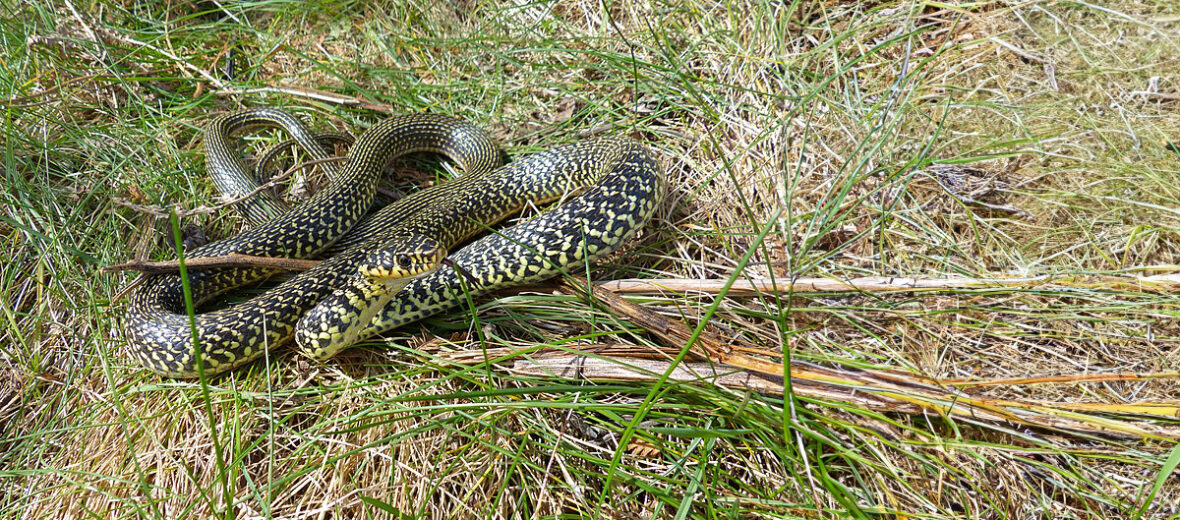
The green whip snake, aka western whip snake, can be found throughout most of Europe. They tolerate a range of habitats including: arable land, temperate forests, shrublands, pasturelands, rural gardens, plantations, and even urban areas. Even though they face the threats of habitat loss at the hands of agriculture; vehicle strike – being hit by vehicles on the road; hunting; trapping; and persecution for being thought of as medically significant venomous snakes, these serpents still have a stable population and are listed as Least Concern by the IUCN.
First the Stats…
Scientific name: Hierophis viridiflavus
Weight: Up to 1+ lb.
Length: Up to 60 inches
Lifespan: Up to 20 years
Now on to the Facts!
1.) Green whip snakes are incredibly fast and very lithe.
2.) While primarily terrestrial (spend their lives on the ground) these snakes can climb well too.
3.) Like so many other snake species, they are solitary and only come together to mate. These snakes will also conglomerate into dens during winter.
4.) They will brumate (hibernation for reptiles) during the colder winter months.
5.) If harassed, cornered, or threatened they become extremely defensive and will repeatedly bite.
But wait, there’s more on the green whip snake!
6.) A group of snakes is called a bed, den, knot, nest, or pit.
7.) Even though they are considered to be non-venomous, if they are allowed to bite for long enough, they can emit a type of venom-like effect from their Duvernoy’s gland.
Did you know…?
If bitten for longer than 5 minutes, the victim will often suffer deficits to their neuromotor skills. But a bite from these snakes is not considered to be medically significant.
8.) Frogs, various lizards, mice, young rats, young birds and their eggs are all on the menu.
9.) Females lay clutches of up to 15 eggs that hatch in up to 8 weeks.
10.) Snakelets measure up to 9.84 inches in length.
Be sure to share & comment below! Also, check out the Critter Science YouTube channel. Videos added regularly!
Want to suggest a critter for me to write about? Let me know here.
Some source material acquired from: Wikipedia & IUCN
Photo Credit: Bernard DuPont



